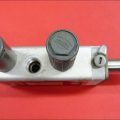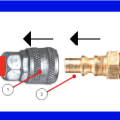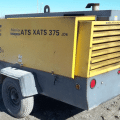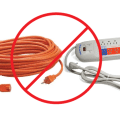Hey! This site is reader-supported and we earn commissions if you purchase products from retailers after clicking on a link from our site.
Chances are that when you’re selecting air fittings for your compressed air system, you’re likely to need to decide between using industrial or automotive fittings, as these are the two most common.
A lot of people find it difficult to know which is more suitable for their system, and so, this article will provide all the relevant information on the two so that you’re able to select the right one for you!
Table of Contents
- What are Automotive and Industrial Air Fittings?
- Choosing the Right Air Fitting
- FAQs (Frequently Asked Questions)
What are Automotive and Industrial Air Fittings?
First of all, let’s clarify that automotive and industrial air fittings are “styles” of air fittings that differ from one another. When selecting air fittings, one of the most important considerations is choosing the style that fits your system before proceeding to select the right size.
Is it very common for people to ask which style is better? Well, there is no difference in performance or longevity between the styles. It is just a matter of preference or a matter of what style is already installed in your system. The most important factor to understand is that the two styles are not compatible with one another.
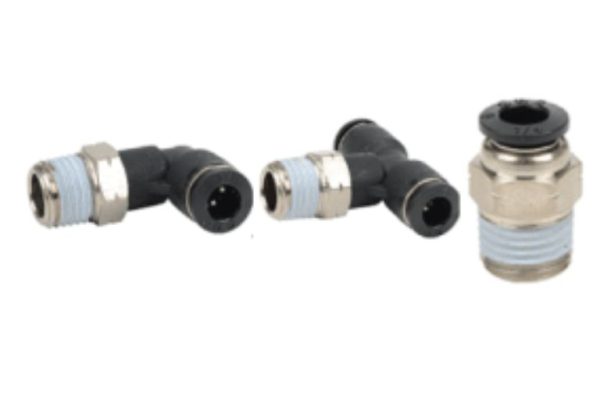
Choosing the Right Air Fitting
Given that there are two common styles of quick-connect fittings – automotive and industrial style. The most common difficulty for people is when they have existing air fittings installed in their system and they purchase the wrong style. If you already have air fittings you want to make sure you purchase the same style as your existing fittings so that they fit together.
If you don’t know what style you have, my advice is to check the tip of the male plug. The female coupler, unfortunately, will give you no clue about what style it is. Here are some tips to help you distinguish between an automotive and industrial air fitting:
Automotive Style Air Fitting
The automotive-style male plug has a beveled inward tip, which kind of looks like a spark plug hence the name, automotive. Automotive-style couplers tend to have one stripe going across the fitting.
Here is an example of automotive-style air fittings readily available on Amazon!
- ColorConnex is a patented system that allows color-to-color matching of couplers and plugs among pneumatic interchanges - Easily connect plugs and couplers with same color
Prices pulled from the Amazon Product Advertising API on:
Product prices and availability are accurate as of the date/time indicated and are subject to change. Any price and availability information displayed on [relevant Amazon Site(s), as applicable] at the time of purchase will apply to the purchase of this product.
Industrial Style Air Fitting
The industrial-style male plug has a bevel or ring protruding outward on its tip. Industrial-style couplers generally have two stripes going across the fitting.
Here is an example of industrial-style air fittings readily available on Amazon!
- SHOP GRADE - performance tested & built to last from 100% solid brass & steel designed for all-day use working with air compressor tools, hoses, and airline accessories in the garage or shop.
Prices pulled from the Amazon Product Advertising API on:
Product prices and availability are accurate as of the date/time indicated and are subject to change. Any price and availability information displayed on [relevant Amazon Site(s), as applicable] at the time of purchase will apply to the purchase of this product.
Each of the different styles of plugs has a matching coupler. If you have that specific coupler, chances are it will only accept a plug with the same style. Although it is said that some industrial-style couplers will accept V-style plugs, I wouldn’t bank on it.
The problem is most of the couplers look the same on the outside, so they are far harder to identify than plugs. There is a supposedly accepted way of identifying them via counting the number of thin and thick “stripes” on the body of the coupler as described in the tips above, but it’s pretty useless because not everybody adheres to it.
Also, another thing to consider is that unless you have two couplers from a single manufacturer, one company’s thick stripe can look like another company’s thin stripe which can make it difficult to distinguish. Plus you have to remember which marking is in which style, and then of course the plugs don’t have matching markings.
If you’re lucky, some manufacturers will stamp their disconnect fittings with the product number. Usually, the product number will include an I for industrial style or an A for automotive style. However, the industrial plug is sometimes referred to as the M-style, while the automotive is listed as the T-style or C-type.
There is also a V-style, which is meant for high-flow compressor air distribution systems. It is similar to the industrial, except that the plug is wider to accommodate greater volumes of fluids.
Some contractors who operate multiple crews will use different-colored air hoses and different styles of fitting for each crew. This way, they don’t “borrow” each other’s air hose. Aside from these two common types of fittings, there are some universal fittings that will work with either style, but the majority use a single-style fitting.
FAQs (Frequently Asked Questions)
There is generally no difference in performance or longevity between industrial-style and automotive-style air fittings. It is simply a matter of preference. It’s advised to purchase whichever already exists in your compressed air system so you’re able to install the new fittings.
No, you must ensure that if you have industrial or automotive air fittings already installed in your air system you purchase the same one to be able to fit them together. These fittings will not fit into one another, and one of the most common mistakes compressed air users make is purchasing the wrong fitting.
Additional Reading:
- Using Aluminum Air Pipe For Compressed Air
- Copper Pipe For Compressed Air
- Galvanized vs Black Pipe For Air, Gas And Water
- Using ABS Pipe For Compressed Air
- Using Nylon Tubing For Compressed Air
- PVC Air Lines
- Using Pex Pipe for Compressed Air Lines – Do’s & Don’ts
- Best Compressed Air Pipeline Materials For Compressed Air Piping Systems
- Steel vs Brass Air Fittings
- Compressed Air Metric Fittings
- Air Hose Fittings Types – Guide To Air Compressor Coupler Types
- Compressed Air Fittings Guide
- Air Compressor Hose & Tube Guide
- Using Pex-Al-Pex Compressed Air & Pex-Al-Pex Fittings
- Pex A vs Pex B Pipe & Fittings
- PEX Fitting Types Guide
- How to Plumb an Air Compressor Setup in Garage
If you have any questions regarding industrial vs automotive air fittings, please leave a comment below, with a photo if applicable, so that someone can help you!



